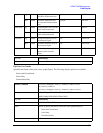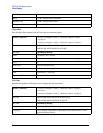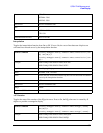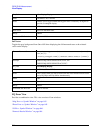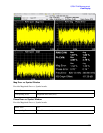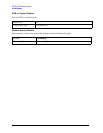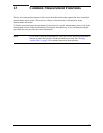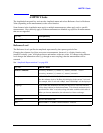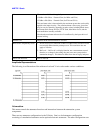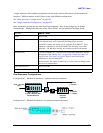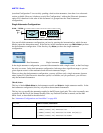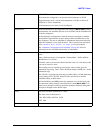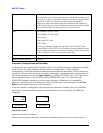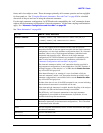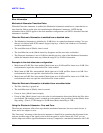
849
AMPTD Y Scale
AMPTD Y Scale
The Amplitude front-panel key activates the Amplitude menu and selects Reference Level or Reference
Value (depending on the measurement) as the active function.
Some features in the Amplitude menu apply to multiple measurements; others apply only to specific
measurements. Keys that only apply to some measurements are blanked or grayed out in measurements
that are not supported.
Reference Level
The Reference Level specifies the amplitude represented by the topmost graticule line.
Changing the reference level does not restart a measurement, because it is a display function only;
instead it vertically ‘pans’ all displayed traces and markers to the new value. If a change to the reference
level changes the attenuation value (e.g. through an auto coupling), then the measurement will be
restarted.
See “Amplitude Representations” on page 850
Key Path: Front-panel key
Initial S/W Revision: Prior to A.02.00
Key Path:
AMPTD Y Scale
Remote Command: :DISPlay:WINDow[1]:TRACe:Y[:SCALe]:RLEVel <real>
:DISPlay:WINDow[1]:TRACe:Y[:SCALe]:RLEVel?
Example: DISP:WIND:TRAC:Y:RLEV 20 dBm
Sets the reference level to 20 dBm, which displays in the current Y axis unit.
For example, if the Y axis unit is dBμV, then 126.99 dBμV will be displayed.
Couplings: If you reduce the attenuation, the analyzer may have to lower the reference
level to keep it below its allowed maximum. This allowed maximum level is
specified in the “Max” row, below, along with other variables which affect it.
When you increase attenuation, the reference level does not change.
Preset: 0 dBm
State Saved: Saved in instrument state
Min: RefLevelMin = –170 dBm + RefLevelOffset - ExtGain.



